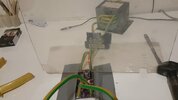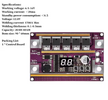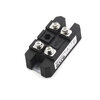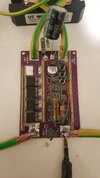SentinelAeon
Member
I got a cheap spot welding board and wanted to test it out. Since i got no LiPo handy, i thought i could use a microwave transformer and a 100A 1600V rectifier since board needs DC. I tried with both 7.5V and 12V coming out of the transformer. I basicaly get nothing. It barely shows on the 0.1mm strip, doesn't go through. If i had to guess i would say im not even getting 1 amp out. Transformer should be more than capable to supply enough amps to at least make a spark. Is there something im missing here ?










